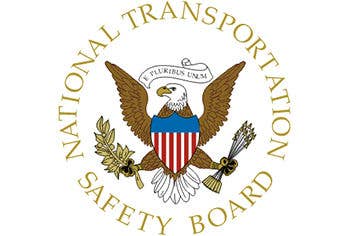
The National Transportation Safety Board is sifting through wreckage of two World War II-era aircraft that collided midair during the Wings Over Dallas airshow on Saturday.
Evolution Revo
Buckeye, Arizona / Injuries: 1 Fatal
The commercial pilot, who had a total flight experience of about 4,500 hours in conventional airplanes, was learning to fly weight-shift-control (WSC) aircraft with the expressed intent of purchasing a high-performance WSC aircraft. The pilot obtained all of his 13.5 hours of WSC experience, including his WSC pilot and instructor certificates, in the two weeks before the accident in a docile, low-performance WSC aircraft with dual seating. Despite being explicitly warned by his instructor that he was “not qualified” to fly the specific model high-performance WSC aircraft involved in the accident, the pilot persuaded an owner of a high-performance WSC aircraft to allow him to fly it solo. The owner reported that the engine start, taxi out, and run-up appeared normal. The wind was light. Witnesses reported that, on takeoff, the aircraft climbed rapidly and entered a steep right bank/roll from which it did not recover. The flight lasted about 16 seconds, and the aircraft reached a maximum altitude of about 80 feet above the runway. Detailed examination of the wreckage did not reveal any mechanical deficiencies or failures that would have precluded normal operation, and data from an electronic engine control indicated that the engine operated normally throughout the flight. The pilot’s autopsy did not reveal the presence of any debilitating physical conditions or impairing drugs.
The pilot inputs for pitch and bank/roll control on a WSC aircraft are opposite those of conventional airplanes, and the pilot’s experience differential between the two aircraft types was substantial. In addition, the high-performance WSC aircraft was a much more powerful and challenging aircraft, due to its control sensitivity, than the one flown by the pilot during his limited WSC training, which was all done with an instructor. The witnesses’ description of the sequence of events and the rapidity with which they occurred is consistent with excessive and contrary control inputs. Given the handling characteristics of the accident aircraft relative to the pilot’s flight experience, it is likely that the pilot over-controlled it during the initial rotation, which led to what witnesses reported to be a very steep takeoff attitude. The lack of familiarity with the aircraft, combined with potential threat of a stall or other loss of control, and possible reversion to habit patterns appropriate to his conventional airplane experience may then have led to the pilot’s reflexive and incorrect control inputs. Those inputs exacerbated the situation and ultimately resulted in a loss of aircraft control.
The aircraft was equipped with a rocket-powered parachute, but the first responders worked on and around the wreckage for about one hour before they were advised by a Federal Aviation Administration inspector of the presence of the rocket and its potential hazard. Existing industry consensus standards only specify warning placards near the rocket egress point, which in this case, was on the aircraft’s left side. Because the aircraft came to rest on its left side, neither the rocket nor any placards would have been visible. ASTM International standards do not require that warning placards be placed on all sides of the aircraft.
Probable cause(s): The pilot's improper decision to operate the high-performance aircraft despite warnings from a flight instructor that he did not have the experience to operate the aircraft that had different and more sensitive handling characteristics than the low-performance weight-shift-control aircraft that he was used to flying, which led to his improper control inputs and resulted in his loss of aircraft control and ground impact immediately after takeoff.

Subscribe to Our Newsletter
Get the latest FLYING stories delivered directly to your inbox






